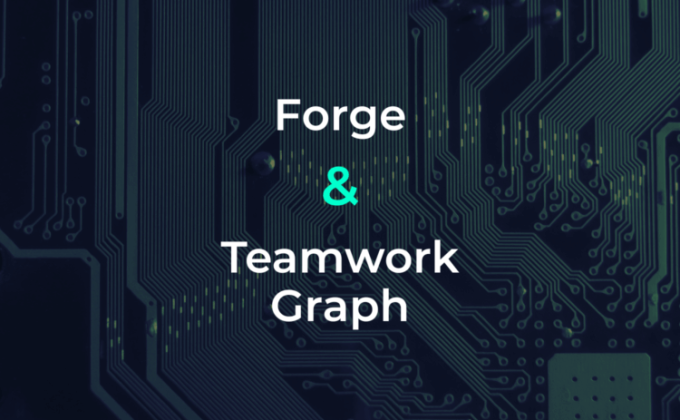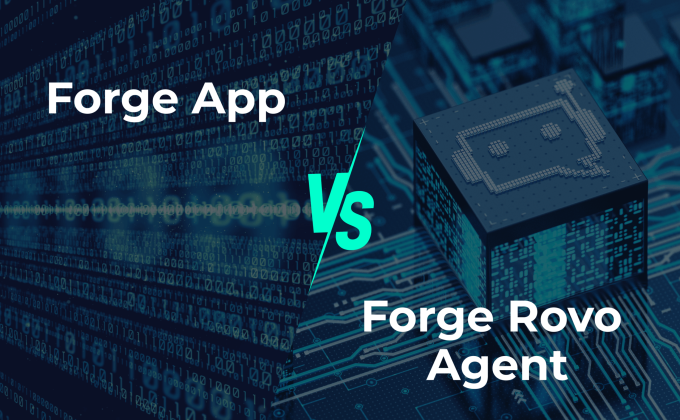Imagine that the entire path of your product, from the initial idea through development to final packaging and marketing, runs like perfectly synchronized clockwork. No waiting for manual handovers, no error-prone duplicate data entry, no unclear responsibilities. All departments work together in a single, shared system.
Sounds like a utopia? In many companies, the reality is different: fragmented tool landscapes, countless Excel lists and manual processes that eat up valuable time and slow down innovation.
Such non-transparent processes are not only frustrating, but also cost valuable time, slow down productivity and can ultimately jeopardize the company's success.
Where manual and isolated processes paralyze your company
The true cost of inefficient, manual processes is often higher than you might think at first glance. Do these challenges sound familiar to you?
- Cost pressures & blown budgets: Many organizations need to make savings. Those who operate too many systems struggle with inefficiencies due to media discontinuities between the tools and inevitably incur high license and operating costs.
- Loss of productivity & high susceptibility to errors: Wherever people perform manual, repetitive tasks, mistakes happen. Incorrectly transferred data can lead to costly production errors or misguided marketing campaigns. What's more, nobody likes doing mindless "copy-paste" tasks. Valuable skilled employees are blocked with administrative work instead of concentrating on strategic and creative activities that really move the company forward.
- Information chaos & endless coordination loops: Information is forwarded by email, gets lost or is out of date. Teams waste productive time searching for information and coordination between product development, marketing and sales becomes a daily struggle.
- Bottlenecks & lack of scalability: The company is growing, but the processes are not growing with it. Every new employee and every new project increases the manual effort exponentially and leads to the collapse of processes. Employees wait a long time for support and SLAs are breached.
- Security & compliance gaps: Without standardized processes, clear approval processes and transparency, audits become stressful and risky.
- Low user adoption: Changes within work systems and processes are often underestimated. If people do not use the new system, you will not achieve the promised results and the costs will continue to pile up.
According to McKinsey good cross-departmental collaboration increases the productivity of teams by up to 30 %.
The solution: The Atlassian System of Work as a bridge between departments
The Atlassian System of Work (SoW) is a centralized approach that effectively brings together teams, tools and knowledge. In a world where efficiency, transparency and collaboration are key to success, it provides exactly the answer that modern companies need.
What is the System of Work?
The System of Work offers a common work philosophy for all departments: Development, IT, Marketing, HR. It combines strategy, tools, knowledge and processes across all platforms and is based on four core principles:
- Work to goals - Work is aligned with corporate goals.
- Plan & track together - Tasks are planned and tracked in an organized manner and across teams.
- Unleash collective knowledge - Shared knowledge is documented, shared and made usable.
- Realize AI teammates - Artificial intelligence becomes part of the team and drives efficiency and innovation.
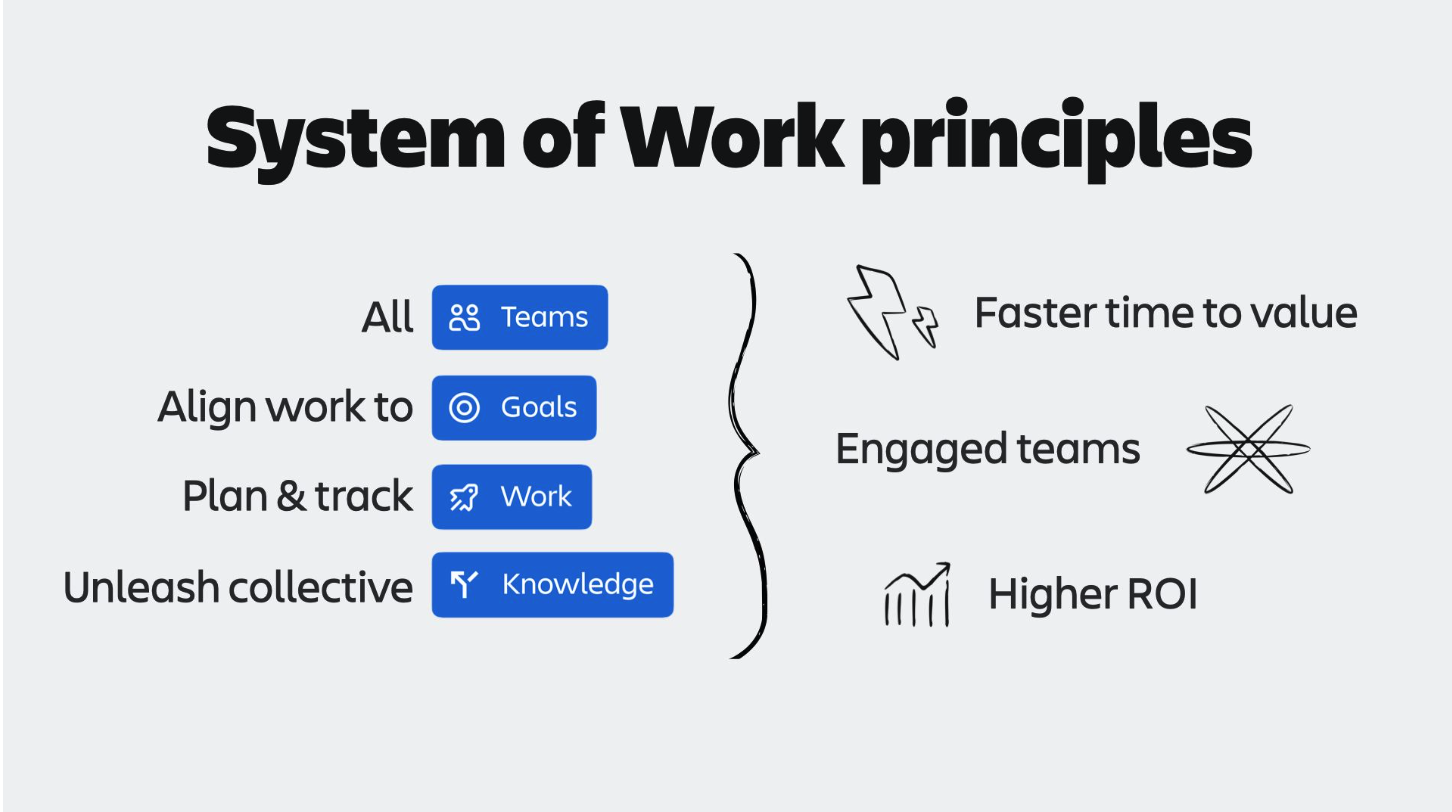
How is this implemented technologically by Atlassian?
Atlassian's portfolio - Jira, Confluence, Rovo, Loom and others - is integrated into a consistent ecosystem. This eliminates redundancy and makes knowledge centrally accessible.
The Atlassian tool suite is specially developed for cross-team collaboration, for example through
- Jira as the central control center: Jira makes it possible to plan, track and manage projects and tasks across departmental boundaries. This means that everyone involved always has an overview of the current status and their responsibilities.
- Confluence as a knowledge hub: Teams can document and share their knowledge centrally in Confluence. This creates a standardized information base and prevents important information from getting lost in email inboxes or on local drives.
- Integration for a smooth workflow: The Atlassian products are seamlessly integrated with each other, ensuring a smooth and efficient workflow. This also provides the basis for the AI-supported Rovo-chatbot, which can provide teams with summaries and further links to projects across applications within a few seconds so that they don't waste time searching for information unnecessarily.
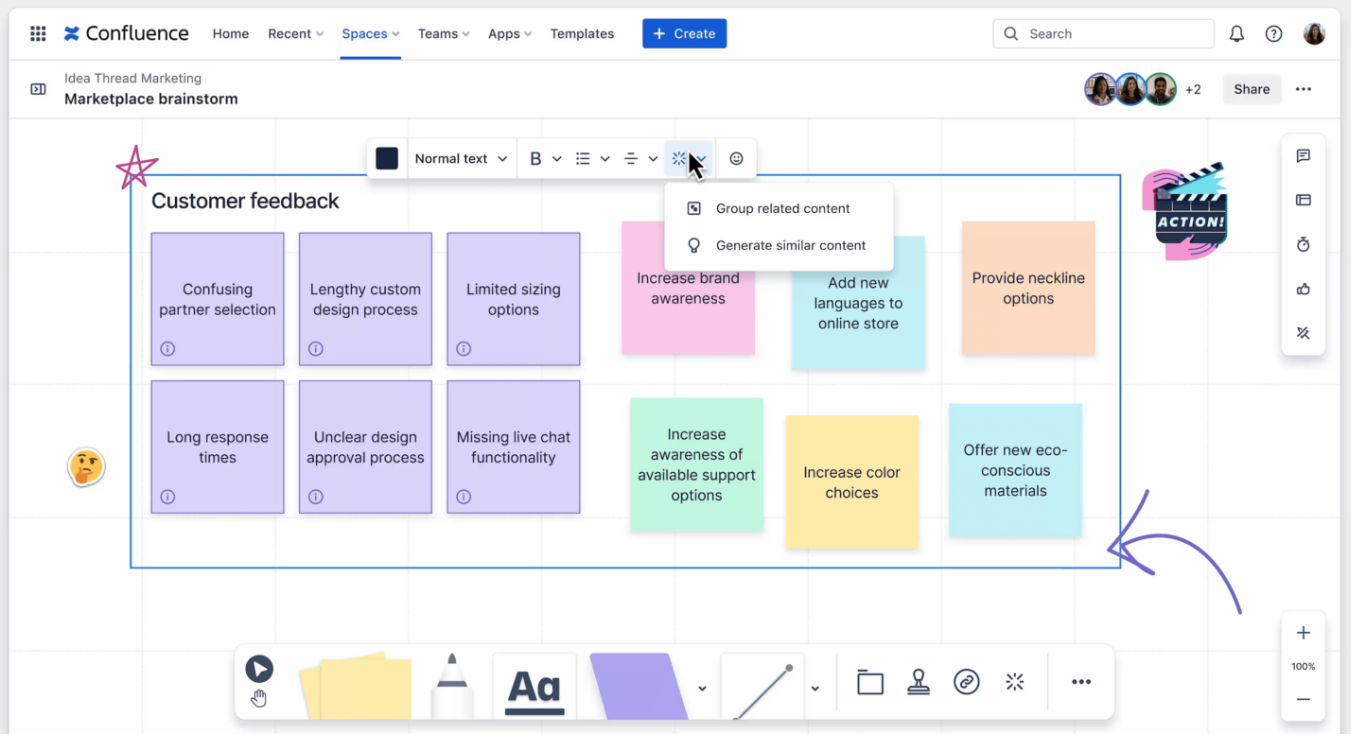
The Teamwork Graph: The heart of the System of Work
Imagine if every piece of information, every project, every task and every person in your company were connected via an invisible, intelligent network. This is exactly what the Teamwork Graph,the data and context layer, which makes the Atlassian System of Work so powerful.
While conventional tools often only function as isolated data silos, the Teamwork Graph connects all relevant work contentregardless of whether they originate from Jira, Confluence, Rovo, Bitbucket or third-party applications. It recognizes relationships between tasks, documents, goals and the people working on them.
This is how the Teamwork Graph works in practice:
- Networking instead of fragmentation: Information from different systems is automatically merged.
Example: A service team is working on a Jira ticket about a system error. The Teamwork Graph recognizes that there is already Confluence documentation with a similar error analysis and displays it directly in the ticket, including the contact person from the DevOps team. - Context on demand: Work is not only documented, but contextualized.
Example: An HR team is planning the onboarding of a new employee. Checklists, approval processes and internal policies from Confluence that are relevant for this role automatically appear in the Jira onboarding task - without anyone having to search for them. - Intelligent recommendations: Through semantic analysis, the graph recognizes which information, contacts or content is needed in a specific work step and provides it proactively.
Example: A project manager creates a new Jira epic for a customer project. The Teamwork Graph automatically suggests similar, completed projects, including lessons learned, templates used and the colleagues who worked on them. - Real-time overview: Dependencies, progress and bottlenecks become transparently visible - across teams and based on roles.
Example: All running projects are displayed in the dashboard of a program manager. The Teamwork Graph automatically highlights dependencies between two projects that require the same developer and warns of potential delays before they occur.
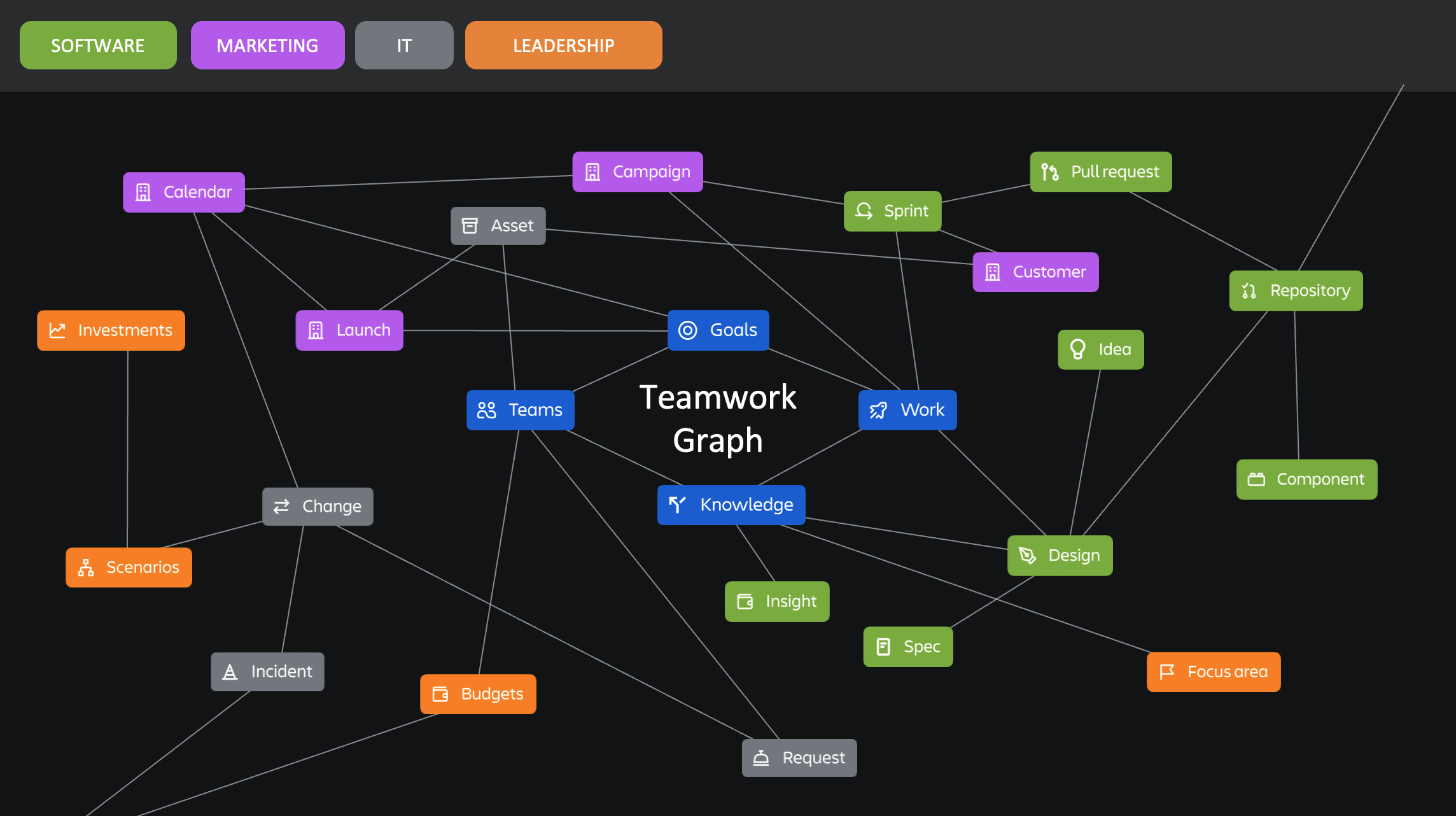
The advantages for companies:
- Breaking open silos: Knowledge is visible where it is needed, regardless of the original tool (no media breaks).
- Faster decisions: Because context and relevant data are immediately available (valid real-time data).
- More independence for the teams: Self-service functions make it possible to find answers and solutions without detours (fewer work interruptions due to queries).
- Seamless combination of strategy and execution: Corporate goals are directly linked to operational tasks so that progress can be measured and tracked (ROI and productivity are traceable).
The Teamwork Graph is therefore not just an "add-on", but the engine for a networked, intelligent and sustainable way of working. It ensures that the System of Work does not stop at mere tool integration, but delivers real, measurable added value - in the form of higher productivity, better collaboration and a clear link between goals and results.
The effect of the System of Work in figures
In times of dispersed tools, remote working and AI breakthroughs, the SoW offers a structuring, scalable framework for modern collaboration. Atlassian is investing heavily in cloud infrastructure, the Teamwork Graph, AI and automation to provide a clear answer to the challenges of hybrid work.
- Project success rate increases from 57 % to 75 %.
- Interruptions decrease by 35 %.
- Time-to-value is accelerated by 40 %.
XALT: Your partner for process automation
The introduction of a central platform is a strategic project. As an Atlassian Platinum Partner, XALT not only helps you with the technical implementation. We work with you to analyze your existing processes, identify the biggest pain points and potential for optimization and design a system that is perfectly tailored to your company's needs and roadmap.
Say goodbye to process chaos. With Atlassian and XALT, create a fully automated, centralized system where your teams can collaborate seamlessly and drive innovation together.


